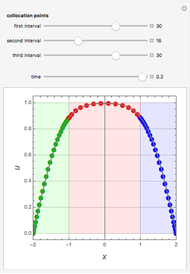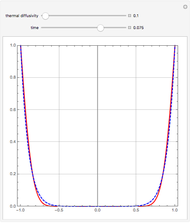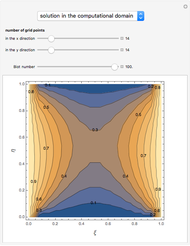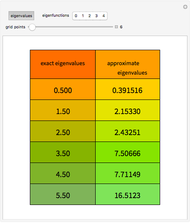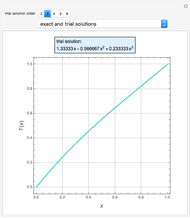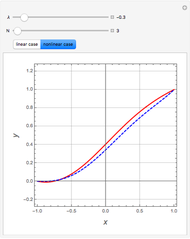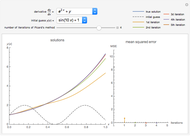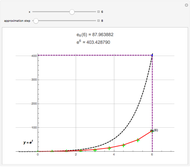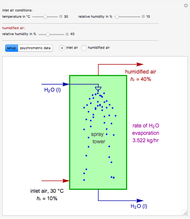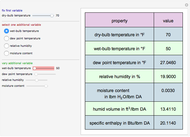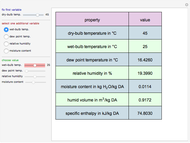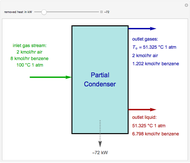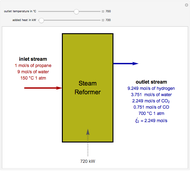Chebyshev Collocation Method for Linear and Nonlinear Boundary Value Problems

Requires a Wolfram Notebook System
Interact on desktop, mobile and cloud with the free Wolfram Player or other Wolfram Language products.
Consider two boundary-value problems (BVP), one linear and the other nonlinear.
[more]
Contributed by: Housam Binous, Brian G. Higgins, and Ahmed Bellagi (February 2013)
Open content licensed under CC BY-NC-SA
Snapshots
Details
The linear BVP requires solving a system of linear equations, which is readily done using LinearSolve.
The nonlinear BVP involves a system of nonlinear algebraic equations, which can be conveniently solved using FindRoot.
In the discrete Chebyshev–Gauss–Lobatto case, the interior points are given by  .
.
The  Chebyshev derivative matrix at quadrature points,
Chebyshev derivative matrix at quadrature points,  , is given by:
, is given by:
 ,
,  ,
,  for
for  and
and  for
for  and
and  ,
,
where  for
for  and
and  .
.
The matrix  is used this way:
is used this way:  and
and  .
.
References
[1] P. Moin, Fundamentals of Engineering Numerical Analysis, Cambridge, UK: Cambridge University Press, 2001.
[2] S. Biringen and C.-Y. Chow, An Introduction to Computational Fluid Mechanics by Example, Hoboken, NJ: John Wiley & Sons, 2011.
Permanent Citation














